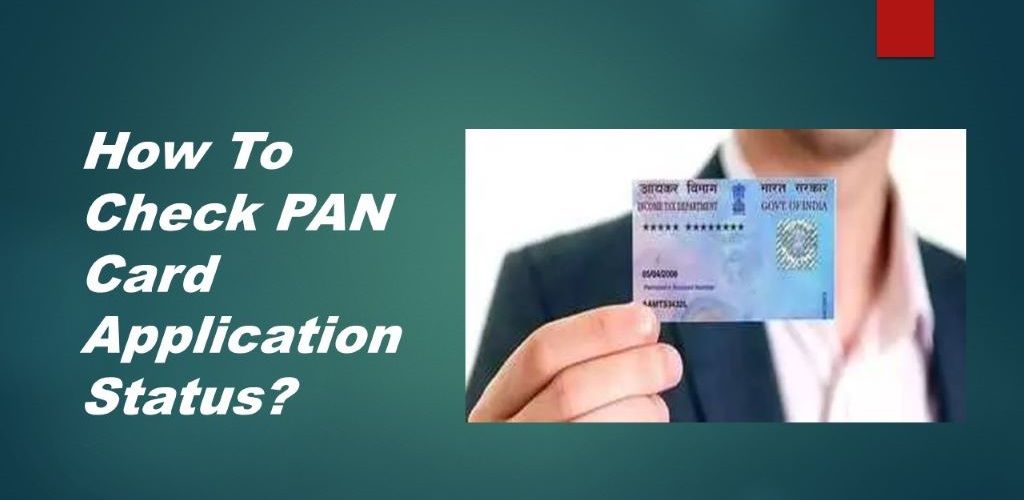In the past few years, the stock market has gained popularity as a favoured investment option among numerous retail investors in India. While this trend signifies a positive shift, a notable tendency among the younger generation of investors is to underestimate the significance of more stable investment choices, such as debt securities. Bonds, in particular, hold considerable advantages for investors of all kinds. Instead of dismissing them outright, it is worthwhile to dedicate some time to comprehend the perks associated with investing in bonds.
This understanding can empower you to make informed decisions when considering the diversification of your portfolio to incorporate assets oriented towards debt, like bonds.
Bonds are regarded as high-security debt instruments facilitating entities to secure funds and meet capital needs. Falling under the category of debt, borrowers obtain these financial instruments from individual investors for a predetermined period.
Various entities, such as companies, governments, municipalities, and others, issue bonds to investors in primary markets. The capital raised through this process serves to support business operations and contribute to the development of infrastructure, benefiting both corporate entities and governments.
Investors acquire bonds at their face value or principal, which is reimbursed after a predetermined tenure. Issuers provide periodic interest, either at fixed or adjustable rates, as a percentage of the principal amount.
Individual investors who possess bonds hold legal and financial entitlements to the organization’s debt fund. Consequently, borrowers are obligated to repay the entire face value of the bonds to these investors upon the conclusion of the specified term. This structure ensures that bondholders receive debt recovery payments ahead of other stakeholders in the event of a company undergoing bankruptcy.
Characteristics of Bonds
There are a few characteristics of bonds that investors should consider. The following fundamental variables can be attributed to the popularity of this debt product.
- Face Value
Face value is the implied cost of a single bond that a company issues. The terms principal, nominal, or par value can also be used to describe bond prices. After a predetermined amount of time, issuers are required by law to give the investor their money back.
Example of bond: An investor decides to pay Rs. 6,500 face value for a corporate bond. As a result, upon the bond’s maturity, the issuing company is required to give the investor back Rs. 6,500 plus interest. Keep in mind that a bond’s face value and market value are not the same thing because market forces affect the latter.
- Interest or Coupon Rate
Throughout its term, bonds earn fixed or variable interest rates that are paid to creditors regularly. Because interest is traditionally paid on paper bonds as coupons, bond interest rates are also known as coupon rates.
Bond interest rates are determined by many factors, including bond duration and the issuer’s standing in the public debt market.
- Tenure of Bonds
The tenure or term of bonds pertains to the duration until they mature. These represent financial debt agreements between issuers and investors, with the financial and legal obligations of the issuer to the investor or creditor being valid only until the term’s completion.
Bonds can be categorized based on their applicable tenure. Those with maturity periods of less than 5 years are termed short-term bonds, while a term of 5-12 years categorizes them as intermediate-term bonds. Long-term bonds are those with terms exceeding 12 years. Furthermore, longer tenures indicate the issuing companies’ sustained involvement in ongoing business activities within the market over the long run.
- Credit Quality
The consensus among creditors regarding the long-term performance of a company’s assets is referred to as the credit quality of a bond. It is based on how much faith investors have in the bonds of an organization. Bonds are rated by credit rating organizations according to the likelihood that a business would miss payments on its debt.
These organizations rate private market participants’ exposure to risk and divide bonds into investment-grade and non-investment-grade debt instruments. Non-investment-grade assets offer high returns at significant risk, while investment-grade securities are subject to reduced yields due to a constant market risk component.
- Tradable Bonds
The secondary market allows for the trading of bonds. As a result, ownership may change hands among different investors during a specific period. When market prices surpass the nominal values, these creditors frequently sell their bonds to other organizations so that they can obtain bonds with higher yields and better credit ratings.
Are Bonds a Good Investment?
Many financial gurus believe that bonds may make a terrific addition to your investing portfolio when they are used wisely in conjunction with equities and other assets. In contrast to stocks, which represent ownership shares in a business, bonds represent the debt obligation of a business or public institution.
The longer time you have to weather market swings, the more concentrated your stock holdings can be. While stocks yield higher interest rates, they also come with a larger risk. However, you’ll want more bonds in your portfolio as you get closer to retirement because you won’t have as much time to weather bad times that could deplete your nest egg.
Bonds may make up 10% of your portfolio in your 20s; by the time you’re 65, that number will probably be closer to 40% or 50%.
To put it briefly, bonds are fixed-income securities that offer significantly higher security than stocks or equity. They are the best options for investors who want to diversify their portfolio but have a low tolerance for risk because they guarantee a fixed return upon maturity.
What are the Popular Bonds Available?
Listed below are the types of bonds.
- Treasury Bonds
Treasury bonds, issued by the central government, are considered the safest type of bonds due to the absence of credit risk. These bonds typically have maturity periods ranging from ten to thirty years and offer a fixed interest rate, influenced by prevailing market conditions. This stability in interest rates contributes to their reputation as a secure investment option.
- Municipal Bonds
Local and state governments utilize municipal bonds to raise funds for various development projects, including schools, highways, and hospitals. One key advantage of municipal bonds is their tax-exempt status, making them an attractive investment option. These bonds come in both short-term and long-term maturities, providing flexibility for investors based on their financial objectives and preferences.
- Corporate Bonds
Corporate bonds are issued by businesses or company conglomerates to raise money for their operations. Because the creditworthiness of the issuing corporation backs them, they are riskier than treasury bonds. Depending on the issuer’s creditworthiness and the state of the market, corporate bonds can have a range of maturities and interest rates.
- High-yield Bonds
Companies issue high-yield bonds, also known as junk bonds, when they have lower credit ratings, making them riskier compared to investment-grade bonds. To compensate for the increased risk, these bonds offer higher yields, attracting investors seeking potentially higher returns. The term “junk bonds” reflects the higher level of risk associated with these securities due to the lower credit quality of the issuing companies.
- Mortgage-Backed Securities
Real estate firms pool numerous mortgages and issue bonds secured by the underlying mortgage pool to generate mortgage-backed securities. These securities are safer than corporate bonds. After all, they carry less credit risk because they are backed by the cash flow from the mortgages.
- Floating Rate Bonds
The interest rate on floating rate bonds is periodically changed per a reference rate, such as the repo rate set by the Reserve Bank of India. Because the rates fluctuate in line with the going rates in the market, it shields investors from interest rate risk. These bonds’ interest rates are influenced by macroeconomic factors as well as market swings.
- Zero-Coupon Bonds
Zero-coupon bonds have no periodic interest payments and are issued at a discount to their face value. Rather, they provide a predetermined return upon maturity, equivalent to the discrepancy between the face value and the issue price. For investors who wish to fix their return for a certain time frame, they are perfect.
- Callable Bonds
Callable bonds are redeemable by the issuer before maturity, typically at a premium. They give the issuer flexibility in handling their debt commitments, but they expose investors to reinvestment risk.
- Convertible Bonds
At a predetermined conversion ratio, the issuing corporation may convert these bonds into shares of its stock. They provide stable income and the possibility of capital growth to the investor.
- Inflation-Protected Bonds
Intending to shield investors from inflation, the government offers inflation-protected bonds. Their fixed interest rate is periodically modified to account for variations in the Consumer Price Index.
Top Advantages of Considering Bonds to Maximise Your Returns
It’s always a good idea to look closely at the many benefits of investing in bonds to make more informed financial decisions. Among them are the following:
- Guaranteed Returns
The fact that bond investments usually come with assured returns is one of its most alluring features. The performance of the market determines whether you will receive any returns at all when investing in market-linked assets like equities. Bond returns, on the other hand, are often guaranteed and known ahead of time.
For instance, you can be certain that you would receive Rs. 50,000 annually until the bond matures if you buy a government bond with a market value of Rs. 10 lakhs and a coupon rate of 5%. Budgeting becomes simple because these coupon payments are set in advance.
- Capital Preservation
Bonds offer numerous benefits, one of which is their ability to shield your cash from gradual depletion. Even if increasing your cash may be your main objective when investing, protecting the capital you already have is just as crucial.
This is especially true for investors without a safety net and risk-averse individuals. Therefore, you might choose to incorporate bonds in your portfolio to conserve some of your wealth rather than investing all of it in high-risk assets. In the event of any financial emergencies, this will serve as a safety net for you and your loved ones.
- Steady Stream of Income
Investing is not just to make long-term gains; it is not the sole one. To make paying your bills easier, you could also want to find another source of income. As an alternative, you might wish to establish another source of income to supplement your wage if you’re getting close to retirement age.
The advantages of bond investing start to matter at this point. Coupon payments are a reliable source of periodic revenue for many debt securities. You can simply benefit from a consistent income stream by investing in bonds with appealing coupon rates.
- Low Initial Investment
India issues bonds at incredibly low investment prices. These debt securities are available with face values of as little as Rs. 1,000. For investors who don’t have a sizable lump sum saved up, this might be a good option even though it might be too little to generate a respectable interest rate.
For instance, you could start investing in bonds after saving Rs. 1 lakh over a few months. You can increase the amount of debt you have over time as you gain more money. The income benefits of the bonds you have invested in will keep adding over time.
- Favourable Risk-Reward Ratio
Investing in bonds also has the benefit of raising portfolio returns without appreciably raising total risk. Put another way, the risk-reward ratio is more favorable when you include bonds in your portfolio.
This can be especially helpful if you want to make money on your investments but are in a situation where you cannot afford to take on significant investing risks. It may also be helpful if you’re getting close to retirement or want to start with safe investments before stepping up to riskier ones.
- Limitations of Bonds
Bond investments have several advantages, but there are also certain drawbacks that investors need to be aware of. The following are some of the principal drawbacks of bond investing.
- Lower returns
Bonds could give less return on investment than other investment categories like equities. Even though investors seeking a consistent income stream may find the set rate of return appealing, returns may not be as great as those from alternative investments, particularly in an environment with low-interest rates.
- Inflation risk
It may lessen the fixed returns provided by bonds’ purchasing power. The real return on investment will be negative whenever the rate of inflation exceeds the bond’s interest rate.
- Interest rate risk
Bond prices and interest rates have an inverse relationship. Bond prices will decline in response to rising interest rates, and investors who must sell their bonds before they mature may suffer losses. Bonds with longer terms may carry a greater risk.
- Credit risk
The possibility of an issuer default is always present, particularly with lower-rated bonds. Investors risk losing their money if the issuer is unable to pay interest or repay the principal amount when it matures.
- Liquidity risk
Certain bonds could be harder to sell in the secondary market because they are less liquid than others. As a result, investors may sell their bonds for less than they were hoping to or may not be able to sell them at all.
- Market risk
Events in the political and economic spheres can have an impact on the value of bonds. These elements may lead to fluctuations in bond prices, which could mean losses for investors.
How to Invest in Bonds in India?
If you’re wondering how to purchase bonds in India, keep reading for the steps to investing in bonds in India:
- To trade bonds in the secondary market, you must first open a Demat and trading account with a bank, brokerage house, or other financial institution.
- Select a bond kind that fits your investing objectives. Municipal, corporate, and government bonds are available as options; each has advantages and disadvantages of its own.
- Learn everything there is to know about the bond you want to buy. To make wise judgments, be aware of the issuer’s interest rate, credit rating, and maturity date.
- Buy the bond from a financial institution or broker. The kind and issuer of the bond determine the minimum investment amount.
- Retain the bond until it matures to get the face value plus any interest that has accumulated. Bond investments can provide security and income, but it’s important to be aware of the dangers and make decisions based on your financial goals.
Things to Consider Before Investing in Bonds
Before making a bond investment, investors need to think about several things.
- Credit Rating: The credit rating of the bond issuer is an important consideration because it indicates the issuer’s ability to repay debt and creditworthiness. Reduced default risk is indicated by higher credit ratings, although they may also come with lower returns.
- Interest Rates: Bond prices are heavily influenced by interest rates. When interest rates rise, bond prices typically do too, and vice versa. Whilst making investment decisions, investors ought to take the present state of interest rates into account.
- Maturity: Longer-term bonds often yield higher rates, but because they are more susceptible to fluctuations in interest rates, they also entail greater risk. Short-term bonds, on the other hand, provide smaller returns but are less vulnerable to fluctuations in interest rates.
- Yield: The yield on a bond is the amount of money an investor will make back on their investment. In general, larger yields correspond to higher risk. Together with other considerations, investors should take the yield into account.
- Liquidity: It is easier to buy and sell certain bonds than others because they are more liquid. Bonds with lower liquidity may be more difficult to sell and call for a longer holding period.
- Tax implications: Bond investors should also think about the tax ramifications of their decisions, as interest income may be taxable.
Frequently Asked Questions
Bonds are issued by issuers who borrow money from investors to operate. Until the bond matures, investors get regular interest payments; at that point, the issuer repays the principal.
Because of their issuer backing and set yields, bonds are often regarded as a safer investment than stocks. However, the state of the economy and the issuer’s creditworthiness will determine how safe they are.
The fixed interest payments on bonds are threatened by inflation, which lowers the bond’s total value and purchasing power. As a result, while buying bonds, it’s critical to account for the risk of inflation.
A fixed-rate bond, sometimes referred to as an interest-only bond, has a fixed interest rate that stays the same throughout the bond. Investors can expect steady cash flows from this kind of bond.
Bond investments can yield profits in two ways:
The first option is to keep the bonds until they mature and start earning interest. Selling bonds for more than you bought for them is the second way to profit from them.








